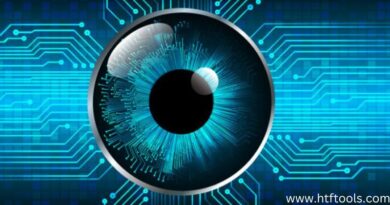Fascinating Facts You Didn’t Know About Electronic Nose Technology

Electronic Nose:-
An electronic nose can be called an electronic sensing device that is used to detect odors or tastes. “Electronic Sensing” uses sensor array and pattern recognition systems and allows human sensations to be reproduced. Since 1982, research technology has been developed, called the electronic nose, which can detect and detect odors and tastes. This process is similar to human depreciation and is for other applications including identification, comparison, and data storage retrieval. Such devices are used for industry.
In many industries, odor detection is performed by human analysis, chemo sensors, or gas chromatography. And then this technique is about volatile organic compounds but the relationship between results and odor perception is not straightforward due to the interaction between some odor components.
Scientist Alexander Graham Bell said odors are difficult to measure. Scientist Alexander Graham Belle Observed in 1914. And this kind of science of smell became the science that has been observed in a decade. Not only that.
No real progress was made until 1950. Measurements for odor detection are usually energy-efficient but do not involve physical particles. The electronic nose was meant to confirm human damage which acts as a non-splitting mechanism: i.e. the smell/taste is called a fingerprint. The instrument has headspace sampling, a sensor array, and recognition modules, which are used for signal patterns that are characteristic of odors.
The electronic nose has three main parts. 1- Sample delivery system, 2- Detection system, 3- One computing system. The sample distribution system enables the panning of the sample headspace, which is the fraction analyzed. The headspace is then injected into the system in search of an electronic nose. The sample delivery system ensures continuous operation.
In most electronic noses, each sensor is sensitive to all volatile atoms, but each in its own way. However, in bio-electronic noses, receptor proteins are used that react to specific odor molecules. Most electronic nose sensors use arrays that respond to volatile compounds upon contact. A specific response is recorded by converting the signal to a digital value through an electronic interface. The recorded data is then calculated based on statistical models. The centers used for
How was the electronic nose designed?
It has been developed in a joint venture between Indian and Saudi universities using biodegradable polymer and monomer electronic devices. His research has recently been published in the journals Materials Horizon and Advanced Electronic Materials. This sensor has a heterostructure, and the top sensor has a monomer in turn.
Now it remains to be seen how many real lives can be saved with the help of this electronic nose coming to India and how important this invention becomes. This electronic nose can play a very important role in measuring changes in chemical-based reactions, and scientists have high hopes for it.
There are two types of electronic noses as follows:-
1. Metal-oxide:-
Metal-oxide mic semiconductor (MOSFET) devices – are used to amplify electronic signals and transistors are used to replace them. This is the principle that molecules in the sensor field are used to charge positively or negatively, which has a direct effect on the electric field. Thus, each additional charge directly affects the transistor of the particle, which is then done by computer systems. So inevitably every detectable atom has an interpretation for a computer system.
2. Organic polymers:-
Organic polymers conduct electricity to conduct the polymer. The same materials like carbon black are used to conduct the polymer. Quartz Crystal Microbalance (QCM) – Quartz crystal is a way to measure unit mass to measure the transformation of a resonator. This can be added to the database. And can be used in the coming year.
Some devices combine multiple sensors in a single device. For example, polymer-coated QCM attaches to multiple sensors. Independent information works for more sensitive and efficient devices. Other types of electronic noses have recently been created, which use mass spectrometry or ultra-fast gas chromatography, which works on a detection system.
The computing system works to connect all the sensors, which gives the input for data treatment. This part of the instrument is represented by a fingerprint. And provide results. And represents these results, which can be easily used. Moreover, the results of the electronic nose are associated with those obtained from other techniques panel, GC, GC/MS, And Many systems are used to analyze the results.
Artificial intelligence, such as artificial neural networks, is a technique for managing environmental odors. Performing an analysis
As a first step, create a qualified database of electronic noses. The instrument is then identified by incorporating the volatile fingerprint into its database. Thus qualitative or quantitative analysis is done. However, all odors are made up of many different molecules. Which can be interpreted by the device, and will register them as various combinations. So false or inaccurate results can be obtained depending on the nose.




